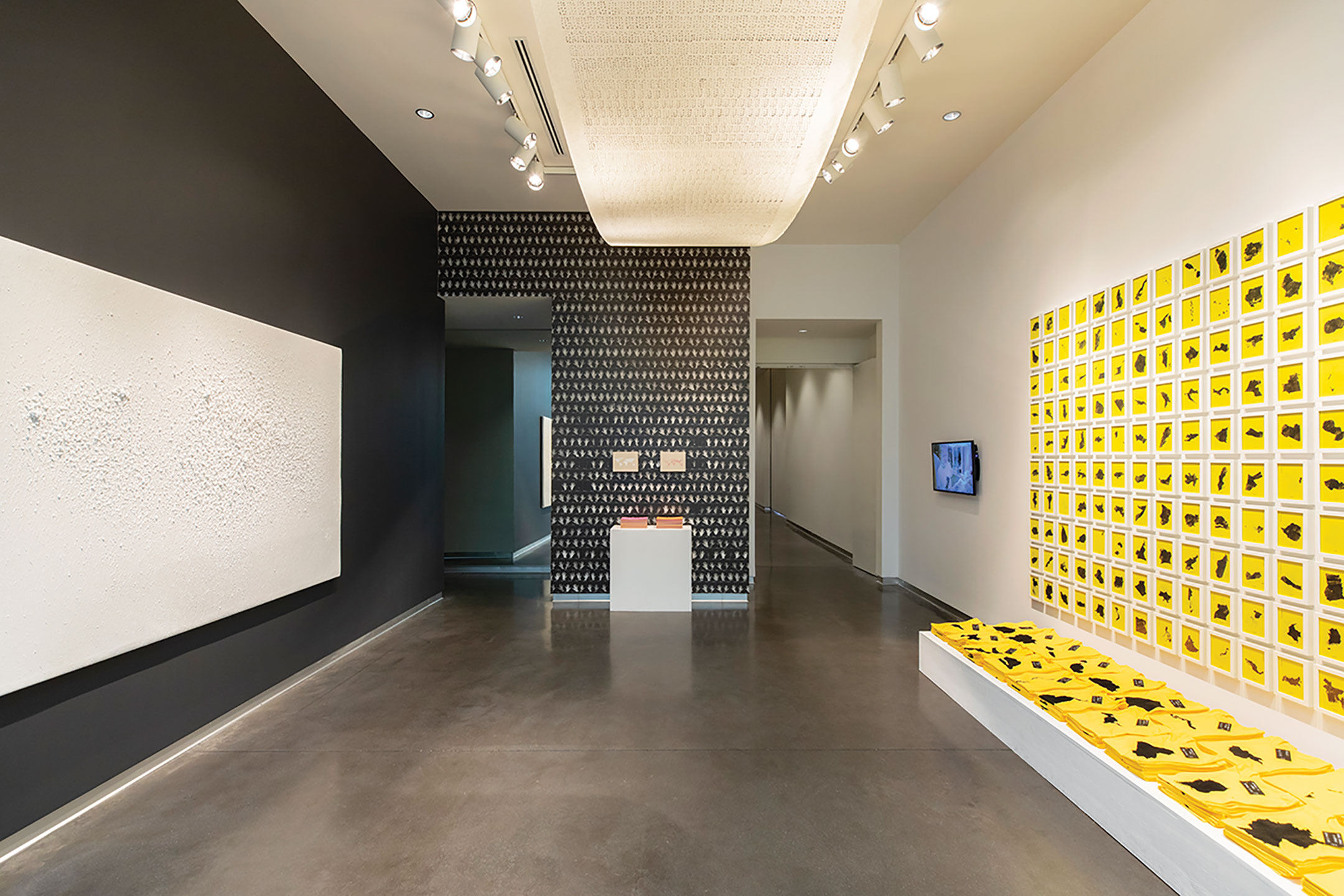« Reviews
The Center is Everywhere
SCAD Museum of Art - Savannah, GA
By Todd Schroeder
Immediately to the left upon entering the space, on a shelf built into the wall, is a book-a thick, plain, white 3-ring binder filled to capacity. With the first page of this book, a component of her piece Human Strokes, Capucine Gros establishes the succinct and poetic voice of her exhibition “The Center Is Everywhere.” The words “one death, one stroke” and the dates for Human Strokes (a projected ten-year project that began on November 13, 2010, slotted to end on November 12 next year) appear under the title. This incisive text is all we need as a prompt for understanding: title, process, duration. There is an instruction manual clarity to the statement, but its poignancy strikes an emotional chord. Death is tragic, but it is as inevitable as the sun coming up in the morning, weeds in the garden, and humidity in Georgia. We all know that humans carry a 100% death rate; nobody escapes it, but that doesn’t make it easy. The hundreds of pages that follow chronicle the particulars of individual deaths, as obtained primarily from a handful of news sources (newspapers that exhibit Gros’s predilections for place). The companion to the book is a 72 x 114-inch white acrylic painting through which Gros bears witness to each documented death (and, thus, each life) with a stroke of white paint. In the painting, she conjures a map of the world and places the commemorative touch of paint in the place where the life ended. A topography of 10 years results.

Capucine Gros, “The Center is Everywhere” installation view at the SCAD Museum of Art. Courtesy of the SCAD Museum of Art.
“The Center Is Everywhere”is chock-full of repetition, which makes sense: Repetition decenters and undermines hierarchy, but it also showcases nuance. The “figure” of nuance emerges from the “field” of sameness. Repetition projects nuance-and what’s more human than nuance? Everyone (Savannah), a swoosh of fabric draping from the ceiling, accounts for each citizen of Savannah, Georgia, with a dot. Each human, no matter status or wealth is equally noted. There are no Excel spreadsheets involved in Gros’s census; it is rendered through the artist’s touch.
Images, laid out in a grid on floor-to-ceiling wallpaper, of the artist’s hands marked with x’s and dashes document personal interactions. Ten Years: 17% (Encountered/Ignored) and Ten Years 33% (Touched/Untouched) were one-year performances that took place ten years apart. Each is a daily log that tracks to the best of her ability all the people that the artist came into contact with and the nature of that contact.
Gros further explores maps and perceptual bias in the epic, multilayered Approximately 199, a project that encompasses stacks of T-shirts printed with the shapes of countries that issue passports (plus one left blank for the 12 million stateless people), framed prints, and sketchbooks, as well as video documentation of a 200-day performance in which the artist wore each of the displayed T-shirts. An aspect of Approximately 199 allows the viewer to purchase a single T-shirt (not one of the 200 yellow and black ones that the artist wore in the performance; those stay intact as part of the piece). You can choose your own size and color but not country; that is left to chance, which drives home the notion that we cannot choose where we come from.
Repetition can imply a machine-like deadness (think assembly lines, a dulling of the senses and mindlessness). The repetition of information-we all know too well-deadens its impact and meaning. But there is also something deeply human about repetition-breath, heartbeat, sex.
Repetition drives us, it is us; without repetition we don’t exist. Gros’s brand of art is aura imbued. In her hands, repetition is not mindless but rather mindful.
(May, 28 - August 11, 2019)
Todd Schroeder is an artist and educator based in Savannah, GA.
Filed Under: Reviews



































Leave a Reply
You must be logged in to post a comment.